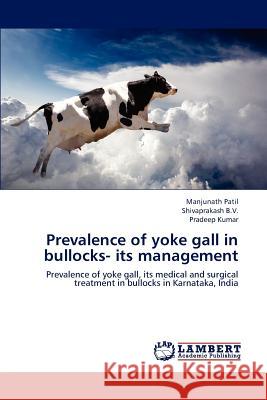Prevalence of Yoke Gall in Bullocks- Its Management » książka
Prevalence of Yoke Gall in Bullocks- Its Management
ISBN-13: 9783848424313 / Angielski / Miękka / 2012 / 180 str.
Prevalence of yoke gall was studied under three different situations-among clinical cases, among animals disposed for sale and slaughter. Classification and evaluation of eight different treatments was made in 57 clinical cases of yoke gall. The bullocks were divided into eight groups for the evaluation of treatment. In group I, diclofenac sodium injection and topical application of Khand ointment (turmeric and lime juice) were given. In group II, diclofenac sodium injection and topical application of Khand ointment and dimethyl sulfoxide liquid were used. In group III, only topical application of dimethyl sulfoxide was employed. Group IV were treated using intravenous administration of dimethyl sulfoxide @ 1.0 g/kg b.wt. Animals of group V were treated by local injection of 3 to 5 ml of dexamethasone sodium. Animals of group VI were treated using fresh herbal preparations made from the root of Triumfeta rotundifolia and Dregia volubilis. Group VII were treated for large acute yoke gall by small stab incision at the ventral part of the swelling. Group VIII were treated by complete surgical excision under local infiltration and sedation.
Prevalence of yoke gall was studied under three different situations-among clinical cases, among animals disposed for sale and slaughter. Classification and evaluation of eight different treatments was made in 57 clinical cases of yoke gall. The bullocks were divided into eight groups for the evaluation of treatment. In group I, diclofenac sodium injection and topical application of Khand ointment (turmeric and lime juice) were given. In group II, diclofenac sodium injection and topical application of Khand ointment and dimethyl sulfoxide liquid were used. In group III, only topical application of dimethyl sulfoxide was employed. Group IV were treated using intravenous administration of dimethyl sulfoxide @ 1.0 g/kg b.wt. Animals of group V were treated by local injection of 3 to 5 ml of dexamethasone sodium. Animals of group VI were treated using fresh herbal preparations made from the root of Triumfeta rotundifolia and Dregia volubilis. Group VII were treated for large acute yoke gall by small stab incision at the ventral part of the swelling. Group VIII were treated by complete surgical excision under local infiltration and sedation.











